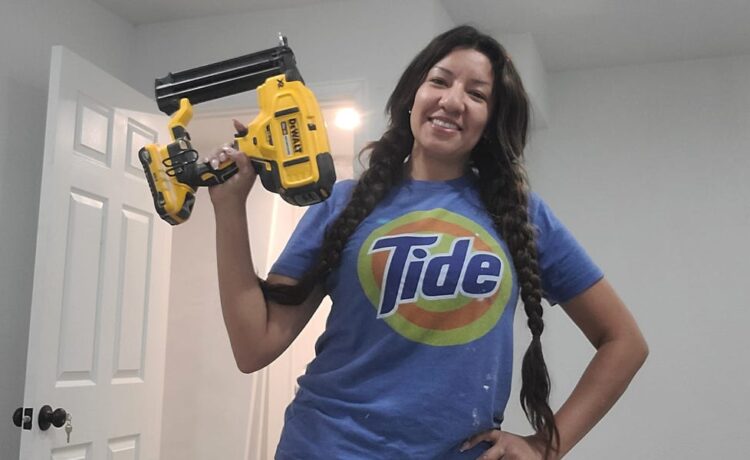Retiring in your 30s is far from simple, but Jeff White and Suleyka Bolaños did it by simplifying.
They had a clear goal — early retirement in 10 years — and a clear plan: add one rental property a year to their portfolio. And they committed to one strategy: house hacking. By renting out parts of the houses they lived in, they could offset their housing costs and free up extra savings.
“All we wanted was one deal a year — it wasn’t like we were looking for 10 — so it was easy,” said White. “It was like, OK, we’re ready to go again. Here’s a handful of deals. Let’s go find the one that works best for us.”
They executed their first house hack in 2017 and added a property a year, according to plan. By 2023, the rental income from their properties surpassed their salaries, allowing them to quit work ahead of schedule. White had worked in corporate finance and accounting for most of his 17-year career, while Bolaños had worked in sales and started her own notary business. They now spend their days exploring Colorado, planning monthly trips, and building their YouTube channel, “PTO for Life.”
“We just did it slow and steady and just looked for the right deal, and we got on the other side in 6.5 years,” said White. Without real estate, “we would both still be working probably for another 30, 40 years easily. We made good money, but not crazy money where you can just retire off a stock portfolio.”
Courtesy of Jeff White and Suleyka Bolaños
House hacking comes with its unique challenges, including managing tenants and even sharing space with tenants. The couple has packed up and moved homes once a year since 2017. They’ve also spent time and energy renovating properties, some of which required more work than others, such as their first house hack: a fixer-upper fourplex that came with mice and mold. The renovation process felt like “a second full-time job,” said White.
However, house hacking can provide a path to financial freedom in less than a decade, as in White and Bolaños’ case. As of 2025, they are living in their eighth house hack and looking for their ninth. They plan to hit 10 by 2026. BI reviewed settlement statements to verify their property ownership.
Using owner-occupied financing to get in with 5% down payments
One key to the Denver-based couple’s strategy was using owner-occupied financing, which typically comes with more favorable terms, such as a lower down payment and interest rate, compared to financing for investment properties. Lenders see investment property loans as riskier than primary home loans and typically want a 20% down payment at a minimum.
While White and Bolaños were renting a portion of the properties they were buying, they were able to avoid putting 20% down because they were also living in the properties and considered owner-occupants.
The main stipulation with owner-occupied financing is that you have to live in the property for at least 12 months. That’s exactly what the couple would do: Buy and move into a home, rent the extra space — either bedrooms if it was a single-family home, or units if it was a multi-family — find and buy a new place after the 12 months, and continue repeating the process. When they moved out, they’d fill the unit or room they were living in with a new tenant, further increasing the cash flow and essentially converting the property from a primary residence to an investment property.
Courtesy of Jeff White and Suleyka Bolaños
They’ve financed each property with a 5% down payment, which lowered the barrier to entry significantly and allowed them to scale consistently.
The difference between putting down 5% and 20%, the typical down payment required for an investment property, can be tens of thousands of dollars: 5% down on a $300,000 home, for example, is $15,000, while 20% down is $60,000.
Getting in with as little as 3.5% with FHA loans
Another strategy real estate investors are using to get started without much upfront cash is using an FHA loan.
This is a government-backed mortgage designed to give low- to moderate-income families and first-time homebuyers the opportunity to buy a home, and the borrowing requirements are less strict than those of a conventional loan: An FHA loan requires a 3.5% down payment and 580 credit score.
There are stipulations — the FHA restricts how much you can borrow, you have to purchase a primary residence and live in it for at least a year before renting it, and borrowers can only have one FHA loan at a time — but it’s a low-cost option that new investors can use to get their feet wet.
Boston-based investor Karina Mejia used an FHA loan to buy her first property at age 22. Early in her career, a low down payment was essential, especially in an expensive market.
She told BI that her first property was a $560,000 three-family home in 2019. A 3.5% down payment amounted to about $20,000. Had she been required to put 20% down, she would have needed to come up with about $112,000.
Mejia moved into one unit, filled the other two with tenants, and their rent nearly covered her entire mortgage payment. Thanks to her low monthly housing payment, she saved up enough money to buy her second property the following year.
There are different types of FHA loans, ranging from a traditional mortgage for your primary residence to an FHA 203(k) loan to make home improvements, which is how Seattle-based investor Ludomir Wanot afforded his first property.
Wanot, who partnered with his brother on his first deal, found a single-family fixer-upper for $138,000 and financed the home purchase and renovation with an FHA 203(k) loan.
Without this specific type of loan, they wouldn’t have been able to afford renovations, which ended up costing $30,000, Wanot told BI. But since they rolled the remodeling costs into the loan balance and put down 3.5%, “we were in for no more than $10,000,” he said.
There’s a misconception that you need to put down 20% and save up tens of thousands of dollars to purchase a property, he said. “That’s not the case whatsoever.”






